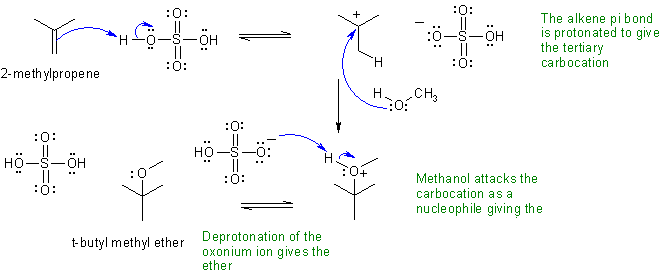
The following diagram shows the solution to the
mechanistic question. Note that all the information applies to a single
reaction sequence that has been completely described verbally.
There is no need for extra reagents or
extra steps etc. The curly arrows are drawn specifically to match the
text in the question. The biggest problem students have is making sure they
understand the language of chemistry. Most students have trouble because they
can't draw the structures from the IUPAC names (that means they don't know their
nomenclature well enough). Read the words carefully, and then make the curly
arrows tell that same story. There is NO need for extra steps. Remember
curly arrows go from electron rich to poor and to balance the
formal charges at each step - errors on formal charges were common.
a.

If you struggled with this part of the question, first draw the compounds whose names were provided, then think about the types of reactions (e.g. acid / base) and try to fill in the structures in the gaps, then finally add the required curly arrows to account for all the bonding changes.
b.

c.

Common errors:
a.
b. Did not read the question and did not use part a as the basis of working out part b.
c. Could not draw the starting material correctly given the name. Did not read the question and did not use part a as the basis of working out part c.